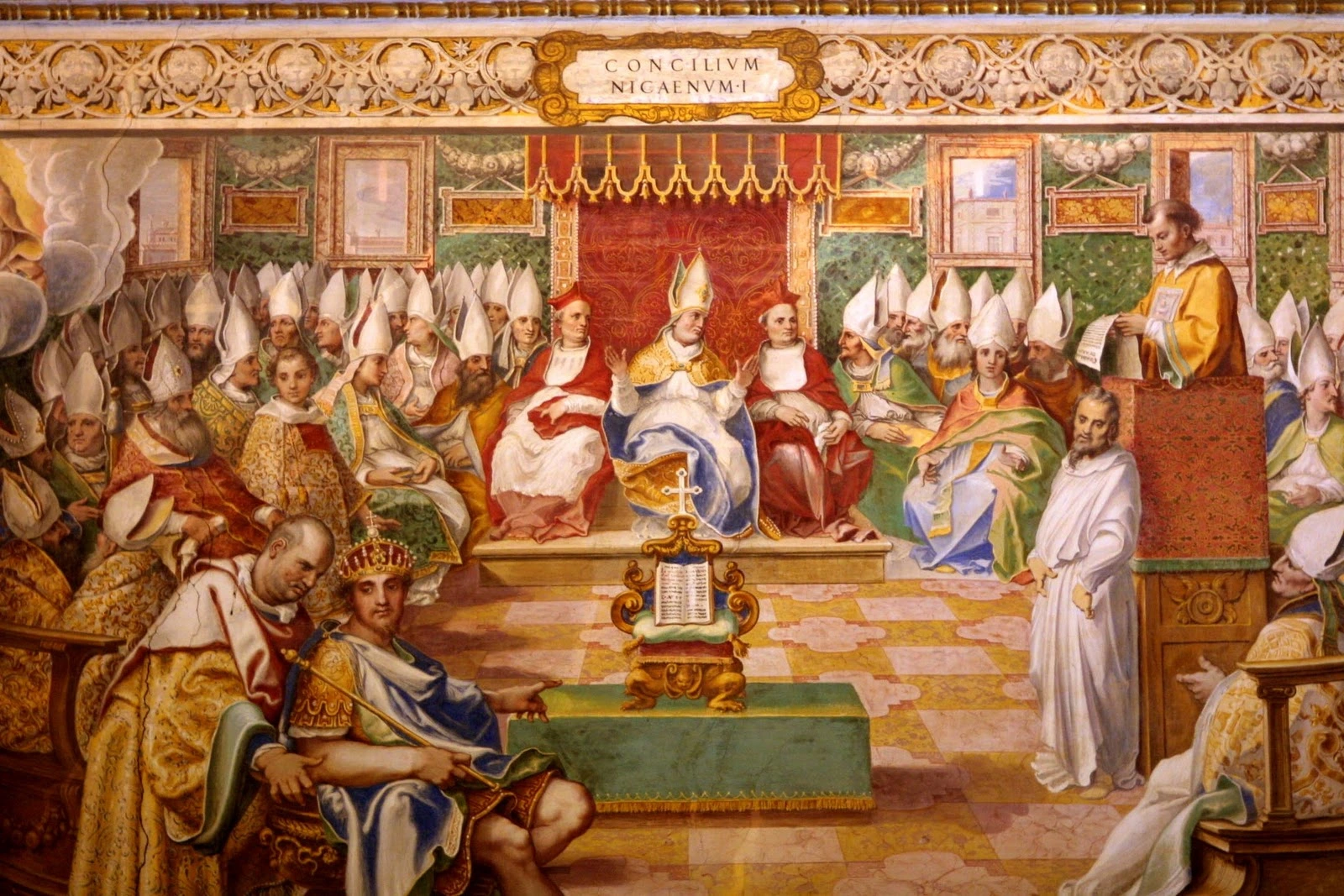Eternal God, Eternal Man

The First Council of Nicaea in session before Constantine
We’re back at the Shorter Catechism this week! We left off at question 20 which provided an answer to the problem of sin. That question reminds us that God did not leave mankind to perish, but provided a covenant of grace to bring the elect into an estate of salvation by a redeemer. The natural question then follows:
Q. 21. Who is the redeemer of God’s elect?
A. The only redeemer of God’s elect is the Lord Jesus Christ, who, being the eternal Son of God, became man, and so was, and continueth to be, God and man in two distinct natures, and one person, forever.
This is the first question of a series of questions about Christology, i.e., the study of Christ. This question is primarily concerned with the hypostatic union. This is a theology term used to describe the union of Christ’s two natures, one divine and one human, in the person (in Greek, the hypostatis) of the Son. This is an extremely important doctrine for Christians. In fact, a proper understanding is necessary for the gospel.
In the early centuries of the church, the doctrine of Christ was the primary place where error and heresy crept in. Even in the New Testament, we see the heresy of docetism, which is the idea that Christ did not have a real human body, but was merely a spirit. The next major error was Arianism, which holds that the Son is not the same essence as the Father. They even a wrote a popular hymn with the line “there was a time when the Son was not!” This error was addressed by the Council of Nicaea in their Creed which says the Son is “God of God, Light of Light, very God of very God; begotten, not made, being of one substance with the Father…” There were other errors as well, but they all fall into one of two ditches. On one hand, there’s a tendency to make Christ less than human (as in docetism). The other tendency is to make Christ less than God (as in Arianism). But orthodox, biblical Christianity holds that Christ is fully God and fully man.
This doctrine is extremely clear in the Bible. First, Jesus is God. Isaiah 9:6, a prophecy about Jesus, says that he is the “almighty God.” This is repeated in the gospels. His name is Emmanuel, God with us (Matthew 1:23), and he is the eternal Word who was with the Father in eternity (John 1:14). He is named as the Creator of the world (Colossians 1:16, John 1:3). His eternal sonship is attested throughout the gospels (Matthew 3:7, 17:5; John 1:18), and even in the Old Testament (Psalm 2:7).
Second, Jesus is man. He lived a fully human life, eating and drinking, sleeping and resting. And, of course, he even died a full human death on the cross, and a full human burial in the tomb. But he is also still a man, even now. In his Resurrection, although his body is glorifies, he still bears the marks of his suffering and death. And Acts 1:11 tells us that “this same Jesus” will return, not merely in spirit, but bodily.
But why? Why must Jesus be fully God and fully man? Because this is necessary for Jesus to be our Redeemer and Mediator! There is one God, and one mediator between God and man, the man Jesus Christ (1 Timothy 2:5-6). Fallen man cannot approach God to speak on his behalf, so God’s representative must be God himself. And God cannot redeem without justice, and that justice had to be poured out on a man. Jesus Christ meets both of these problems: he was and continues to be God and man in two distinct nature and one person forever.
Updates
-
Our Ash Wednesday service will be Wednesday, March 5, at 6 PM. Choir will not meet.
-
Rev. Ron Horgan will be with us on March 8th for an evangelism seminar. We’ll meet at 9 AM with lunch to follow.
Your friend in Christ,
Reid
